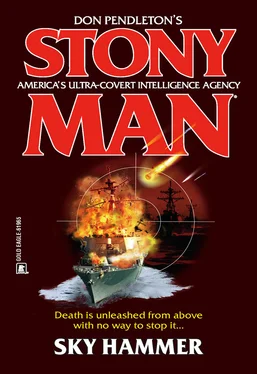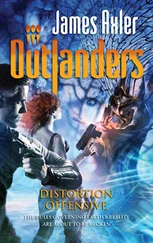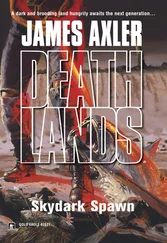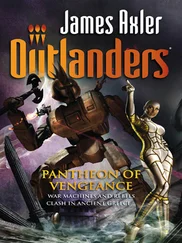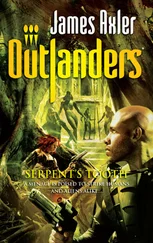Anything was lethal if it moved fast enough. There were hundreds of recorded cases where a tornado had driven a piece of straw into a telephone pole, or done the same thing with a bottle cap and a brick wall. Speed, raw velocity, made objects dangerous.
The space race was still strong back in the seventies, and America had been locked in a deadly struggle for supremacy with the Soviet Union. New weapons were needed all the time. So Mahone did some basic calculations and invented the Thor.
The idea was simple, as good ones usually were. Take a plain steel rod, eight feet long and twelve inches in diameter. Add a couple of inexpensive steering rockets, cheap wings and a limited-capability computer. The whole thing wouldn’t have cost more than a couple hundred dollars.
Now place hundreds of these “spears” into orbit. A floating cloud of destruction waiting to be unleashed. When enemy forces were spotted, targeting information was sent to as many of the Thors as you needed to commit to the attack, and they would obediently jet out of space and into the atmosphere, constantly accelerating down the gravity hit, growing hotter and hotter from the friction with the atmosphere, until finally a white-hot, molten ball of steel moving at Mach Two arrived. There were few tanks, ships or gunnery emplacements of the time period that could have withstood the thundering impact of even a single Thor.
Even better, because of its speed and steep trajectory, a Thor should be impossible for missiles to track and blow out of the sky. The Thor was a cheap, deadly, unstoppable super-weapon.
With a few flaws. Space travel was still expensive back in the seventies, and there was no way to accurately give a Thor the precise location of a target. It was quite possible that a swarm of Thors might drift off course and slam into your own tanks, annihilating your own troops instead of the enemy’s.
The project was given the code name, Sky Hammer, and shelved in the deep top secret archives of the Pentagon. It was brilliant, but not feasible using technology of the time.
“So that’s what we’re facing,” Kurtzman said, turning off the screen. “Sky Hammer, a plain piece of molten steel falling from high orbit. The only things holding back the project before were the cost of space travel and the inability to accurately pinpoint a target. But a dozen nations have relatively cheap access to space these days, dirt cheap if they use an illegal version of the new Spaceship One rocket plane, and with a Global Positioning Device—GPD—bought off the shelf of any electronics store…” The man shrugged. “You’ve seen the results.”
“Everything old is new again,” Huntington “Hunt” Wethers muttered, scowling.
“Son of a bitch,” Delahunt whispered, reviewing the material again on her console. “And this is what hit Israel, a Thor.”
“More likely it was several of them,” Akira Tokaido stated grimly.
“Please bring up the TV news coverage of the wall,” Kurtzman requested, taking a sip of coffee. “I want to check something.”
Delahunt hit a macro and the CNN report appeared in a window within the view of space and started to play again.
“Hold,” Kurtzman said after a minute, and the scene froze. “There, look at that.”
Frowning, Wethers removed his pipe from his mouth. “The wall wasn’t blown up, it was smashed down.”
“Hit from above,” Kurtzman growled.
Wethers turned to Tokaido. “Better check to see if anybody is looking for a geologist at one of Israel’s universities.”
“To analyze the residue at the bottom of the crater?” Tokaido asked. “Yeah, makes sense. And that is the only way to know for sure, isn’t it?”
“Sadly, yes,” Wethers replied. “If there is a lot of pure steel down there…”
“But why did they wait until the ceremony started?” Delahunt wondered out loud. “Just to kill the prime minister? But they missed him.” Her head snapped up. “Paris!”
Biting back a curse, Kurtzman remembered the dying words of the NSA agent. He had said something about a new weapon for sale on the black market. Whoever was behind this had hit the wall as an advertisement. They probably announced in advance what was going to happen on the international arms market, and now that it had occurred right on schedule, they could start taking orders. With enough of them, anything could be smashed down by a Thor. Anything. The White House, Cheyenne Mountain, Hoover Dam… The targets were limitless and completely vulnerable. There wasn’t a defensive system in existence that could stop a Thor. Nothing. Only solid bedrock—and a lot of it.
“A Thor could crush the Farm, and we couldn’t do a damn thing except die,” Tokaido said softly, glancing at the ceiling. There were only white foam tiles in sight, but in his mind the sky was falling at exactly thirty-two feet per second….
“Okay, how do we stop it?” Delahunt asked.
Kurtzman sighed. “We can’t. The old figures were correct. Not a missile or antimissile, or antimissile laser can track and lock on to a Thor fast enough to do any significant damage.”
“Then we have to go after the people controlling it. That’s the vulnerable point, the operators.”
“Yes,” Kurtzman said, glancing at the world map. “Where they are.”
“If this news hits the airwaves and Internet, there’s going to be a worldwide panic,” Wethers stated bluntly. “A Sky Hammer alert would make the Cuban missile crisis look like an ice-cream social! Thousands of people will die in the riots when they try to reach subway tunnels, bomb shelters, anything underground.”
“And none of those would protect them.”
“Exactly.”
“It’s possible that we might have to shut down the Net,” Kurtzman stated. “Akira, prepare to arm the nexus point C-4 charges.”
The young man stopped what he was doing and got busy. The entire Internet was relayed though sixteen junction points. If those were blown up, the Internet was gone, possibly for months. That would cause a loss of billions of dollars to corporations, and nobody had the authorization to do that but the Secretary General of the UN. And very illegally, Stony Man Farm. It had taken them months to get the firing commands for the remote charges, and even then, they’d had to have a field team infiltrate each nexus to add their own control elements. This was something they had talked about for years in dread. Blowing the Internet was a doomsday option, a last-ditch effort to hold back the news that could cause the death of countless people. Nobody sane wanted to undertake this action, but the cyberteam had to be ready. Just in case. On the other hand, if the news got on the cable news shows, then the cat was out of the bag and all hell would break loose anyway, and there really wasn’t anything they could do about that event.
“Could Sky Hammer smash down the junction points?” Wethers asked suddenly.
Kurtzman nodded. “If the people controlling it know the locations, yes.”
“I’ll start a disinformation campaign about this,” Delahunt said, slipping on her VR helmet. The best way to hide the truth was to bury it under half-truths and lies. With enough misleading rumors circulating, nobody would ever believe that Sky Hammer existed.
Kurtzman grabbed a telephone on his console. “Barbara? It’s worse than we feared…yes, a Thor. It’s got to be. We better recall the teams immediately. This is going to get real bad, real fast.”
“I have them located,” Wethers said, working a mouse.
The main screen switched to a map of the world, two glowing blue stars marking the precise location of the Stony Man field teams. They were on opposite sides of the globe.
Kurtzman hung up the phone. “Okay, Barbara is calling Hal, and we have recall authorization. Bring ’em back.”
Читать дальше
